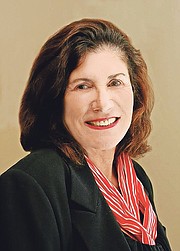It happened again this year. Just like it does every year. The magic sounds, rhythm and beat of Junkanoo are still pounding in our ears, our hearts are still beating a bit faster, we can hardly stop doing the shuffle, when it all comes crashing down. Junkanoo is over and the official, efficient round-up begins. RBPF and Ministry of Works trucks and troops swoop down on Nassau, as instructed, picking up, collecting and tossing onto huge flatbeds the remnants of what was just hours or minutes earlier the magnificent costume pieces of the epitome of Bahamian culture in music, dance and storytelling, the thing we call Junkanoo, the thing we boast about all year, the thing we associate with all things Bahamian. And what do we do with it – we take all the evidence, as if it were a crime, and toss it in the garbage, creating for a short time the most stunning landfill on earth.
Headless wonders. Wonders of the Deep. Little Barbies. Old TV screens. Of course, they are just lookalikes, but wow are they magnificent. Every colour and hue under the sun and full moon. Bejeweled and dolled up, larger than life, shorn only in size by the width of Bay Street where the parade takes place.
Why? Why do we toss out like yesterday’s salad the pieces that take up to a year in planning and months to cut, paste, glue and jewel before we even begin the choreography of the performance? Our throwaway society that did such a good job with single use plastics that we don’t even dream of getting bags from the supermarket anymore has done one lousy job of saving the magic pieces of Junkanoo. We junk Junkanoo costumes with the nonchalance and rapidity of swatting a mosquito.
We don’t toss out the goatskin drum or cowbell. We don’t drop the whistle in the nearest garbage can. Yet we dispose of the most prominent element of Junkanoo, the costume pieces, stripping them from our bodies and dropping them on the ground, like a Ziploc bag that has been washed one too many times and is no longer worth the trouble to save.
What are we supposed to do with the costumes, you might ask. And I’m glad you did.
Although the pieces are not made to be permanent, imagine what they could do for months at schools or PMH or senior citizens’ or children’s homes. All those schools with central courtyards with the sun beating down on empty concrete would look a whole lot brighter with the brilliant colours of a piece depicting anything from the Ancient Warriors to the Space Age and they would provide a focal point for students to understand the meaning of Junkanoo.
Radio talk show host Erin Greene suggests that we need to have a better understanding of what festivals, including Junkanoo, can mean to the Bahamian economy as well as the psyche. She is absolutely right. Junkanoo is not a flash in the pan moment of entertainment. If it is – as we say it is – the explosive expression of freedom with all the emotion that goes with that feeling demonstrated through every fibre of our bodies and soul, we need to manage how we celebrate it not just perfect how we clean up after it. Ms Greene suggests courses at UB in festival management and given UNESCO’s recent declaration of Junkanoo as an Intangible Heritage of Humanity symbol, supporting its potential through academia makes sense. Imagine if a Fred Ferguson were teaching a course in the cultural history of music in The Bahamas or students could sit at the feet of Percy “Vola” Francis or Fast Eddie Dames.
Just as we pay homage to the goal of preservation but do a bad job of it in general despite a few valiant efforts, it is time to preserve and share the best of Junkanoo, creating temporary art in public places. Photo opportunities for visitors, learning opportunities for all. It’s pretty hard to find a more compelling lesson than understanding what lies beneath the pulsating rhythm of Junkanoo – the sheer unabashed, wildly abandoned joy of freedom.
Remembering Susan Donald
She was a tiny woman with power in her hands and anyone who ever had a bad back and sought her services at Life Chiropractic on Village Road, felt that power. Donald died on Christmas day, a young woman with a daughter with special needs and no parents or grandparents left. Her father died when she was young. Her grandparents, David and Frances Donald, a lovely gentle couple, died this year less than two months apart, Fran Donald on November 20 and David on December 22.
Three days later, it would be Susan, a graduate of Xavier’s before leaving Nassau to attend a chiropractic academy where she graduated in the top ten percent of her class and went on to found Life Chiropractic which she operated for more than 30 years while continuing to upgrade skills and treatment methods. As we celebrate the holidays, one young woman with special needs lost everyone who surrounded her with love and care. Please stop by Ty’s Place between Queen’s College and Blairwood on Village Road and let Katie Donald know she is not alone in this world. She is shy but a smile and a flower or a word of comfort could make a difference in a world of someone whose own world came apart in two months while we were making turkey and ham and yams.






Comments
Use the comment form below to begin a discussion about this content.
Sign in to comment
Or login with:
OpenID